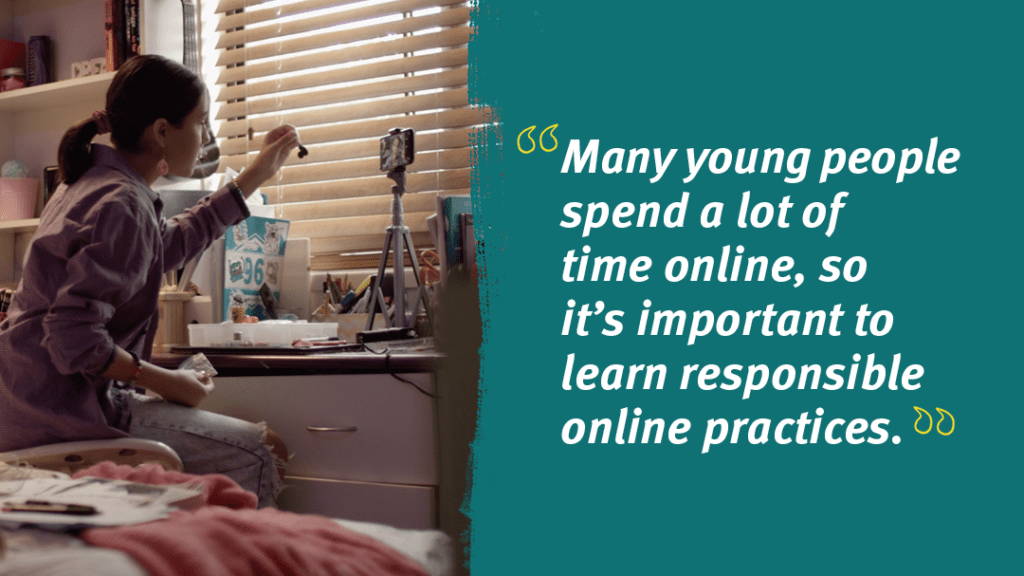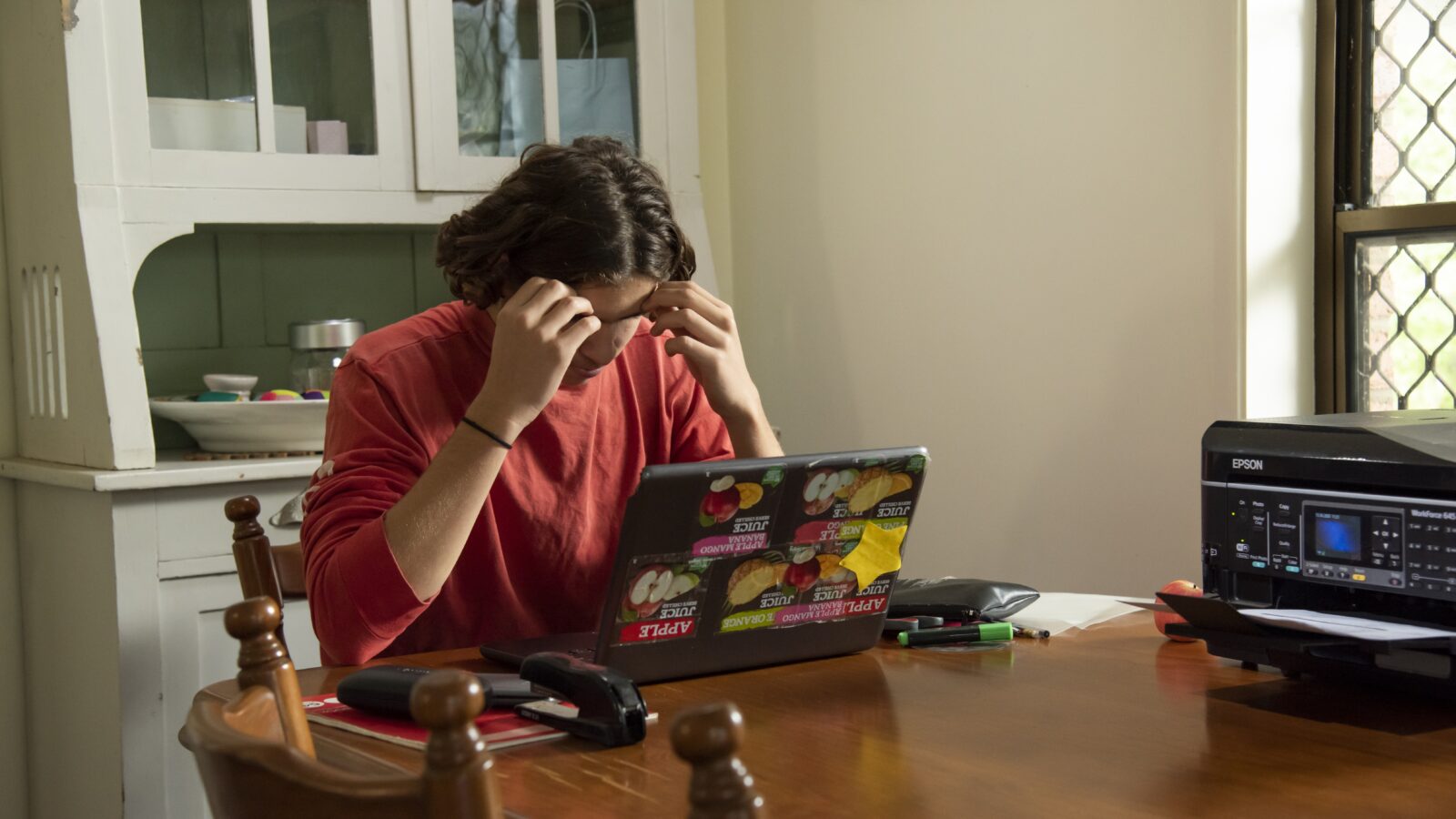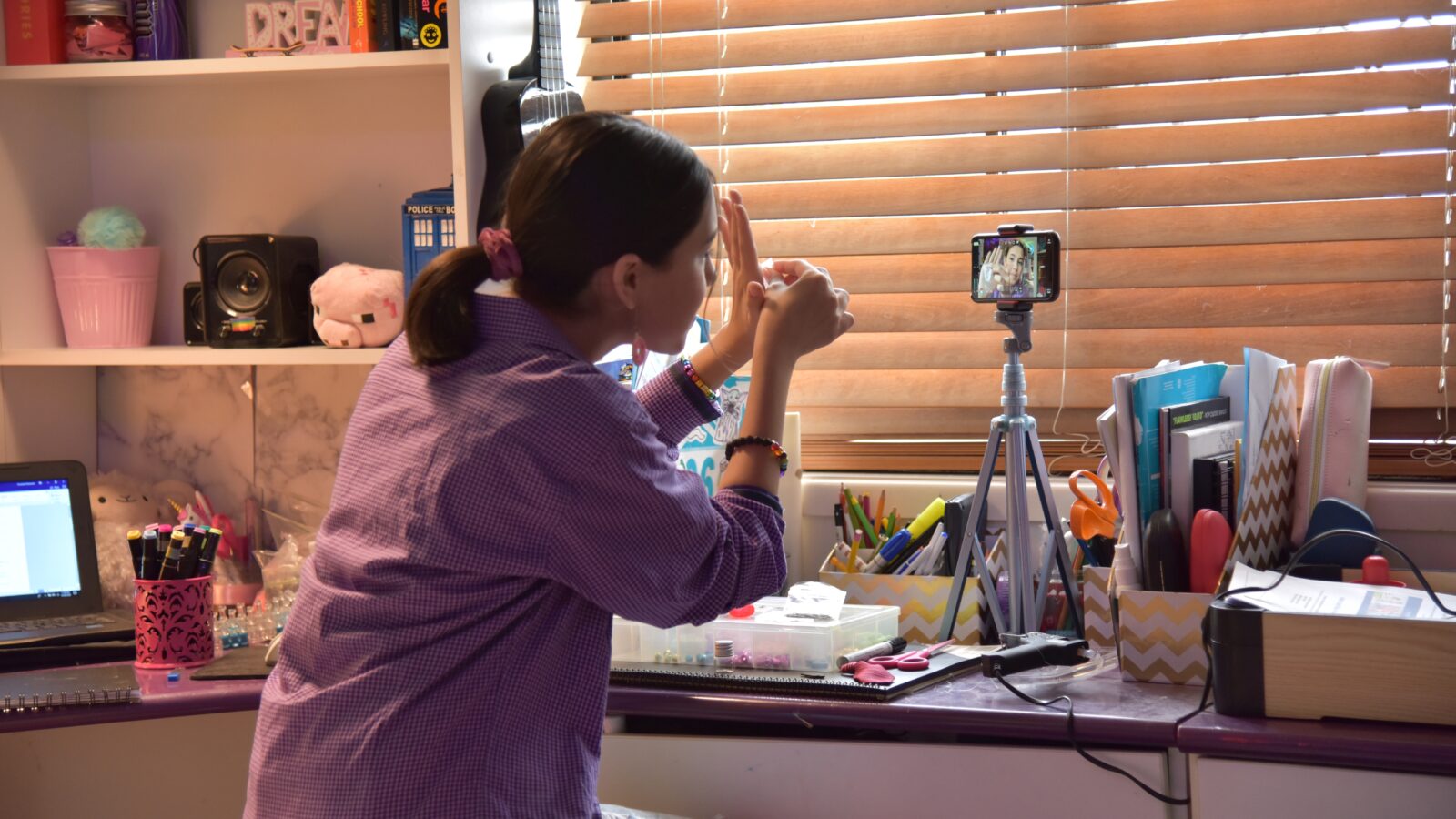Key Points
- Stay up to date with the technology and online platforms that your teen is using.
- Talk to your teen about the risks.
- Aim to find a healthy balance between online and offline.
As technology progresses, our lives are becoming increasingly linked to the online world. Many young people spend a lot of time online, whether it be scrolling on social media, gaming, texting friends, or asking Google for help with their homework. By helping them understand the risks they may face online and what they can do to reduce these risks, you can protect your teen’s safety and encourage responsible online practices.
Staying informed
Technology is constantly evolving, so knowing which platforms are popular among young people and keeping up with the latest online trends can be helpful. Each online space will have different factors to consider, so start by asking your teen about their favourite apps and show an interest in how they like to spend their time online. The eSafety Guide can support you and your teen to learn more about games, apps and social media, including how to report if something goes wrong. Most teens are tech savvy these days however, they may not know all the important tips for staying safe online. Keeping yourself informed about online safety will allow your child to know they can go to you for guidance too. The eSafety Commissioner’s parent and carer webinars are a great tool for understanding the online activities your teen may be engaging in and the potential positives or negatives of their online interactions.
Keeping your teen safe online
Aim to help your teen understand the importance of keeping personal information private and being aware of who has access to what they share online. You could suggest helping them set up privacy settings on their social media accounts and other online platforms. The default settings may not always protect their privacy, so encourage your teen to check their settings whenever they create a new account or join a new platform. They can create a positive online presence by sharing content related to their hobbies, achievements, and passions and avoid any personal or negative content that could impact their future opportunities. A simple strategy you could try is to have your teen ask themselves “Would I be happy for my future employers (or even their grandmother) to see this?” before posting or commenting on anything online. Talk to your teen about what they can do if someone posts something negative about them online. Tell them it is okay to block and report others who are not being nice. You can find more information about cyberbullying on the eSafety Commissioner website.

Finding a balance
Setting limits for your teen’s time online can be challenging, but there are ways to make finding a good balance easier for everyone. By establishing these rules together, you’re allowing them to feel a sense of independence and giving them a chance to take responsibility for their own habits. “The key is to be available but not intrusive. Let go of control and go for influence” (Karen Young). Try discussing reasonable time limits that provide a balance between online and offline activities. It’s important for teens to understand that while the internet offers fantastic opportunities for learning and connecting, like everything, it is best in moderation.
By taking onboard these ideas and engaging in open conversations, you can help your teen build successful habits online that will continue to benefit them beyond school years.
The eSafety Commissioner (eSafety) is Australia’s independent regulator for online safety. It educates Australians about online safety risks and helps to remove harmful content such as cyberbullying of children and young people, adult cyber abuse, revenge porn or image-based abuse and illegal and restricted content. Visit eSafety.gov.au to find out more on how to stay safe online and report online abuse.
Last Updated: 22 February 2024





